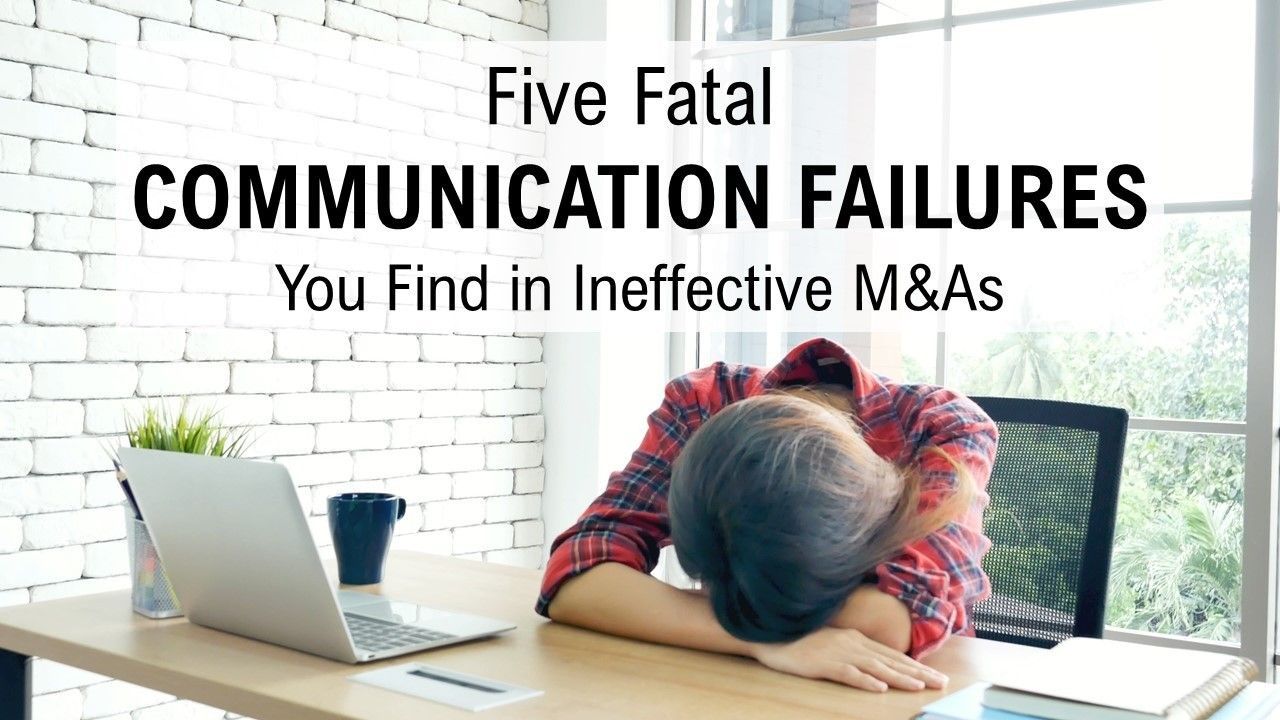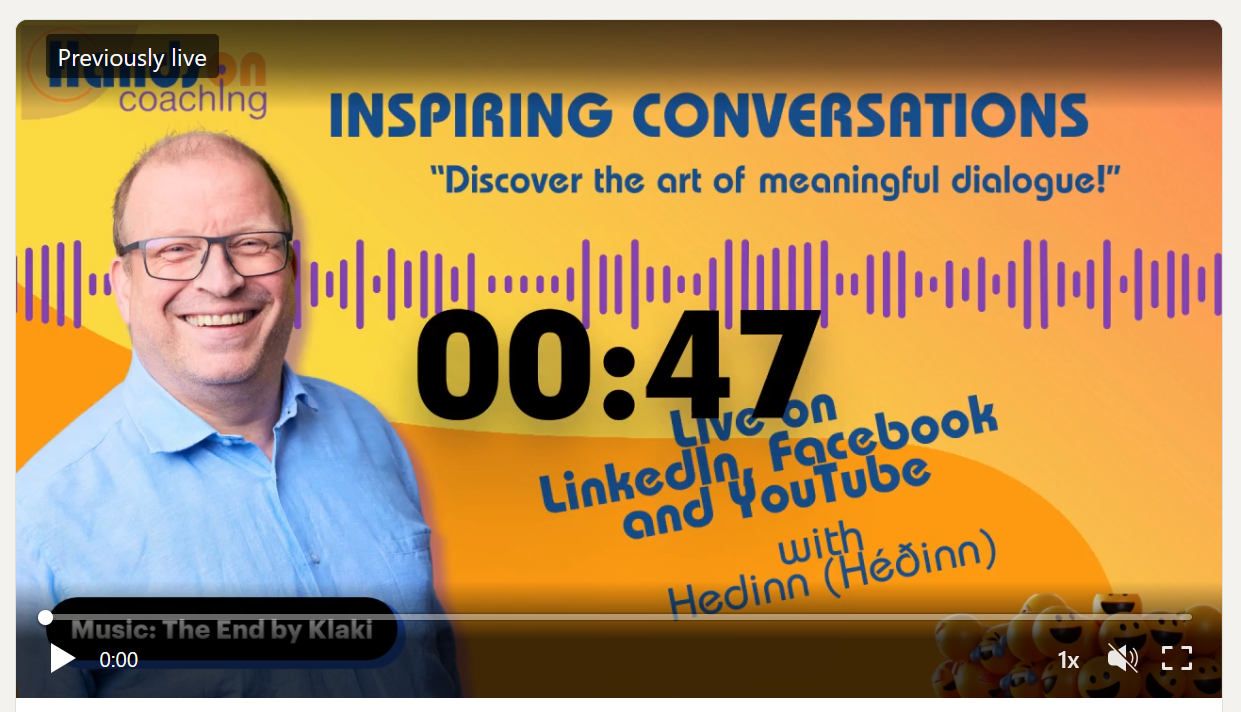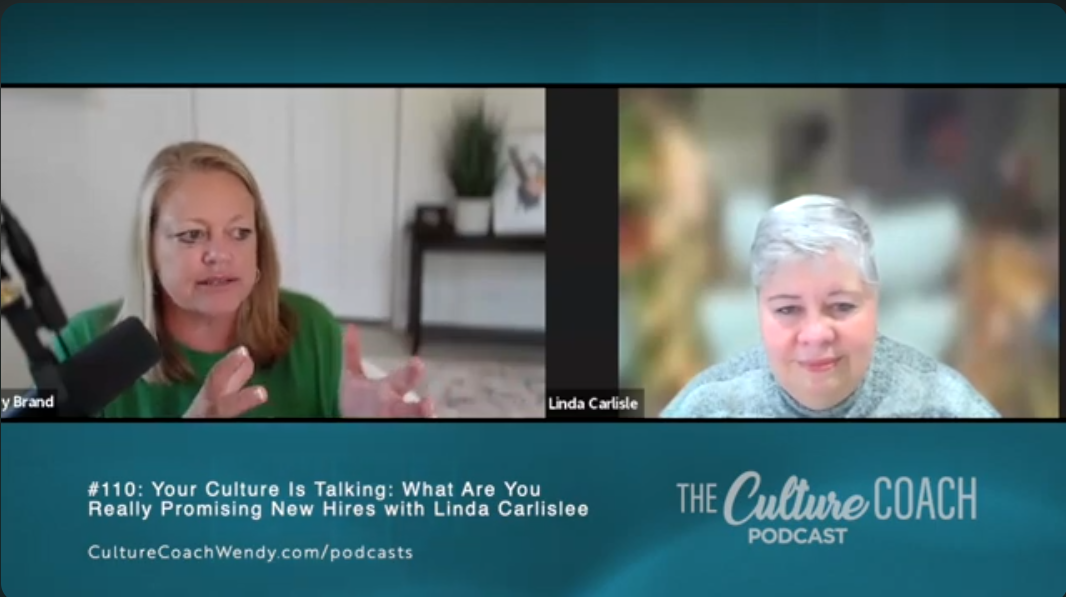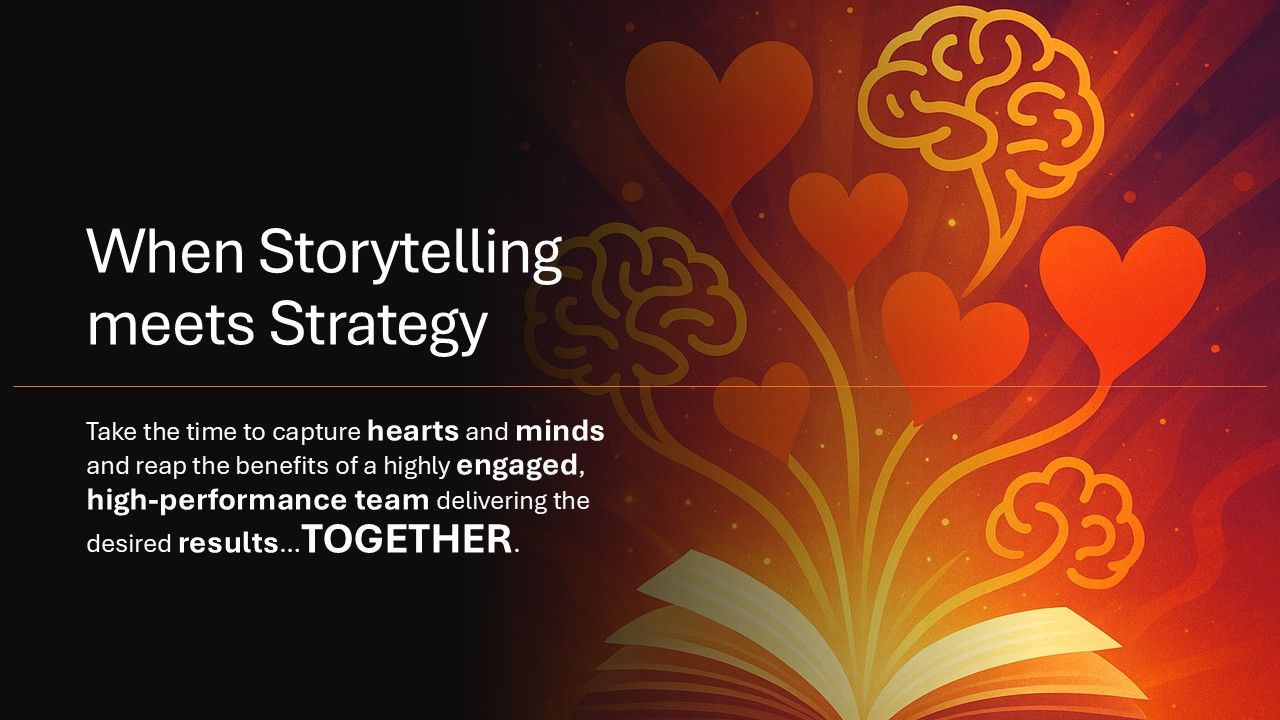Critical Communications in the
MOMENTS THAT MATTER™

But communication failures are foolish when a little forethought would fix your formula for telling your acquisition and integration tale. Use this Five-Part Framework for fabricating fool-proof M&A messaging. ------------------ PART 1 | Your Initial Integration Communication During due diligence, your people will know "something is going on." No matter how cleverly you name your project, there will be strangers in the building, more closed-door meetings than usual, and sentences awkwardly cut off when the uninitiated walk into the room. Before you know it, your employees' psychological safety has begun to erode. THEN you announce the acquisition. Your instinct is to tell both 'your people' and the acquired company's people that they are 'safe.' BUT ARE THEY? Be careful what you say here. There are likely redundancies that must be addressed to maximize the deal's value. COMMUNICATIONS FAILURE #1: Leaders who promise 'safety' then back down on their word not only see psychological safety evaporate, but they also have likely taken a mighty bite out of their own people's Trust. INSTEAD TRY CAREFULLY CRAFTING A CULTURE-BASED COMMUNICATION PLAN CULTURE-BASED COMMUNICATION PLANS consider all audiences (current and acquired employees, customers, partners, suppliers, the media, investors, and other interested stakeholders), balancing the desired transparency and not triggering each constituent's most closely held concerns and beliefs. At a minimum, make sure your audience members know you understand that change is hard. While you cannot promise that there will not be changes, you are determined to be transparent about your decision-making and to do your best to minimize the adverse impacts on them and the business. Assure your new employees that you desire to retain the value, the high performance, the brand reputation, and the cultures that made the two firms seem like such a good fit for each other -- and that to do so means to hold onto to critical aspects of both cultures and the people who make up both great teams, while still making the sometimes tricky business decisions that come with the fiduciary responsibility and stewardship of your role as a leader. This will also be a good place to foreshadow the humanity of your general approach to mergers and the empathy baked into your governing philosophy on the topic of Right Sizing -- using language that reflects both cultures -- and staying true to the spirit of the cultures as well as their expressed spoken words . PARTS 2, 3 and 4 | Right Sizing Done Right Three distinct types of change are part of nearly every M&A integration, sure to put your people on edge. The associated communication failures include: ● FAILURE #2 - Leadership Changes without considering culture and connections ● FAILURE #3 - Roughshod Reorganizations and Team Integrations ● FAILURE #4—Workforce Reductions / 'Right Sizing' messages that imply someone was 'WRONG' and are delivered in a cold and impersonal way. There is one word that can get you through the announcement of all three types of change without violating your values, culture and shared sense of community, undermining your people's trust and confidence, or squandering the goodwill your new employees are willing to extend to you -- and that word is EMPATHY . As you make your selections of who will stay and who will go, remember that each decision will bring with it history, loyalty, and friendships that will directly impact the people who remain. Your new employees will judge the kind of leader you are, how much you value people, and how they can expect you to treat them in your chosen words and actions. Their sense of psychological safety -- and their LOYALTY -- will remain strong (or plummet) depending on how you navigate these changes. Make sure you've carefully considered your messaging regarding WHY you've made the leadership and staffing decisions you've made. In all instances, the decisions must be framed as being about the best long-term interest of the business—never about the people. Keep the dignity of those chosen for layoffs intact and do everything in your power to make the landing of those leaving you as soft as possible. As the newly combined teams come together under new leaders, arm these leaders with tools and talking points to help them inspire confidence in the newly integrated company. Consider team-building tools like Everything DiSC, Strength Finders, or the Enneagram to fast-track team connection. Train your leaders to articulate the company's growth strategy and how their team fits into the future vision. Your employees—both long-term and newly acquired—will assess their words and actions to determine if they can trust their leaders and whether they feel safe, secure, and optimistic about the newly integrated organization, where it is going, and their place within it. PART 5 | Coming Together under a Common Culture As the most challenging stages of post-acquisition change communications come to a close, you can heal some wounds that the change may have caused by executing a deliberately inclusive cultural integration effort that includes listening closely to your newly integrated team. Culture is very personal for most people. Often, culture is a big reason why people come to an organization (it is the essence of the employee value proposition) -- and why they stay. You often hear that people leave organizations because of their leaders' behaviors...But what is culture, after all, but the sum of the behaviors that are encouraged and rewarded within the organization? FAILURE #5 occurs when leaders fail to include their people in deliberately shaping their organization's culture. ---------------------- INTRODUCING THE POWER OF LISTENING— One of the most powerful engagement tools is listening to your people as you strive to select the right behaviors to carry forward in your culture. Proactive Employee Listening serves several purposes, such as: ● determining the level of engagement and trust in leadership as the hardest felt aspects of integration are past. ● understanding what was working well for people within the cultures of both organizations ...and what was missing. ● kicking the tires and assessing how new cultural behaviors you would like to instill are likely to be received. By simply including your people in shaping the future culture of the organization, you signal that what they think, and feel is critically important to you as a leader. With thoughtful input from your leadership team and employees across the company regarding the go-forward culture tenets that will help your company succeed, it is time to execute an extended Culture-based Communications Campaign to embed the new culture across the organization. Reinforce your commitment to cultural behaviors by aligning performance metrics, leadership competencies, rewards, and recognition programs and engaging leaders to introduce the themes into their meetings and the stories they share with their teams. Employing tactics such as gamification can grab people's attention and encourage leaders to tell their personal stories broadly to help bring the new culture to life. In addition to stand-alone cultural messaging, the campaign themes can also be embedded in other communications efforts that reinforce the message and demonstrate how the culture fits with other activities across the company. For example, messaging about 'valuing our people' can be embedded into annual benefits enrollment, literature promoting employee development programs, etc. # # # # # As I’ve said before, we all benefit from sharing stories of doing hard things and delivering tough messages in our business journeys. To navigate BIG CHANGE without losing your people's hearts and minds, you must be planful, strategic, and, most of all, empathic. What mistakes have you seen leaders make when navigating a merger or acquisition? How has it landed with the people? How long did it take for the culture to recover? What might you do differently next time you’re involved in communicating this type of change?









